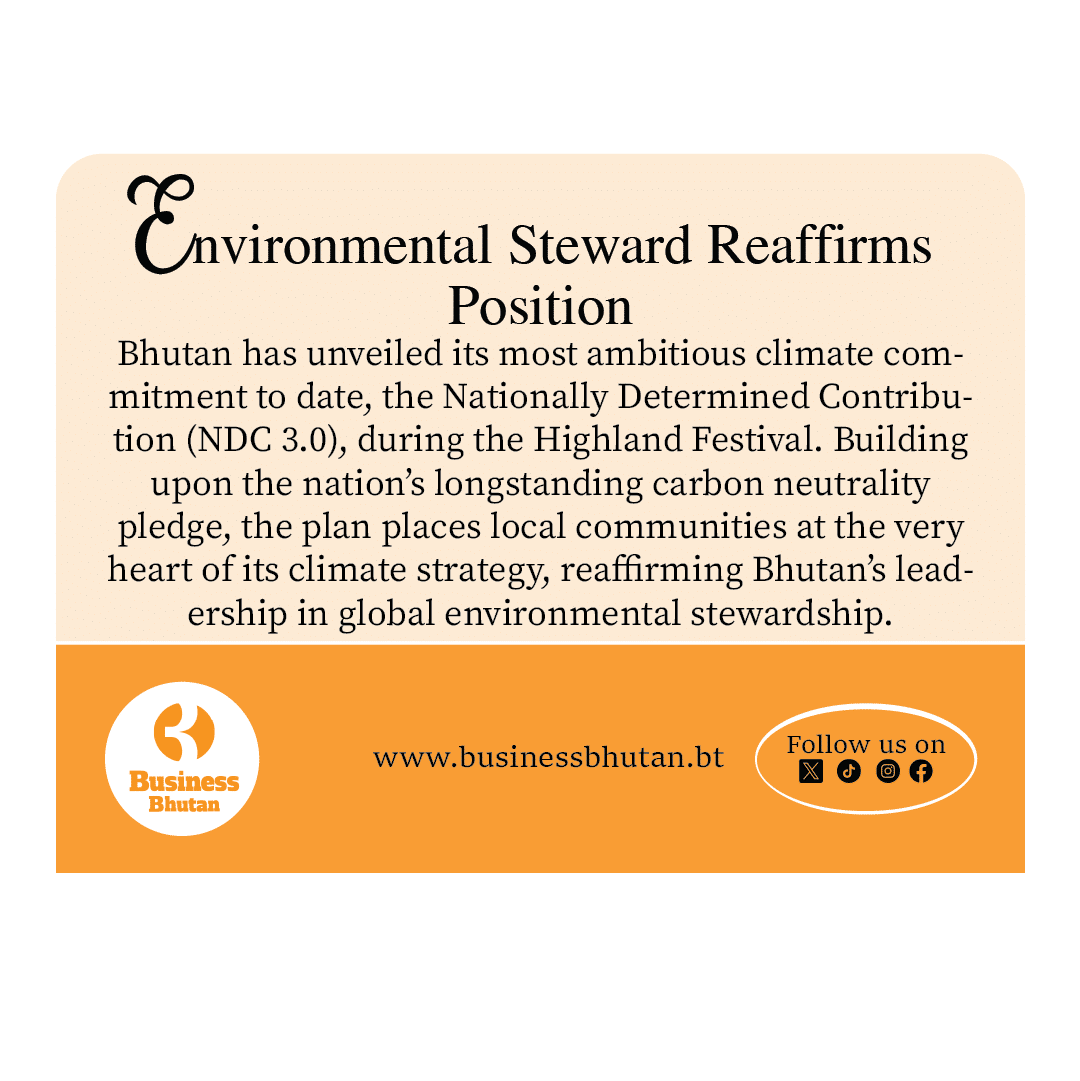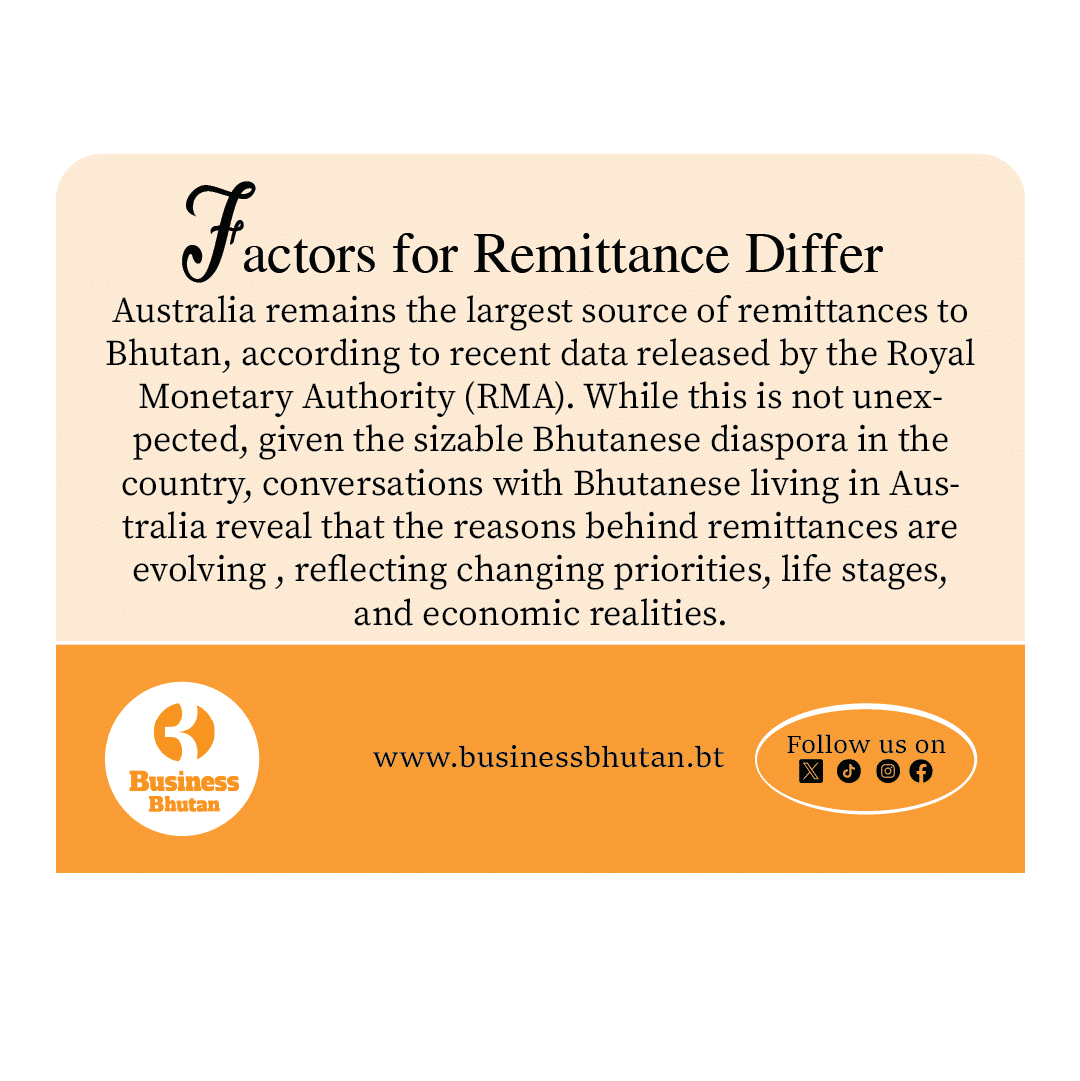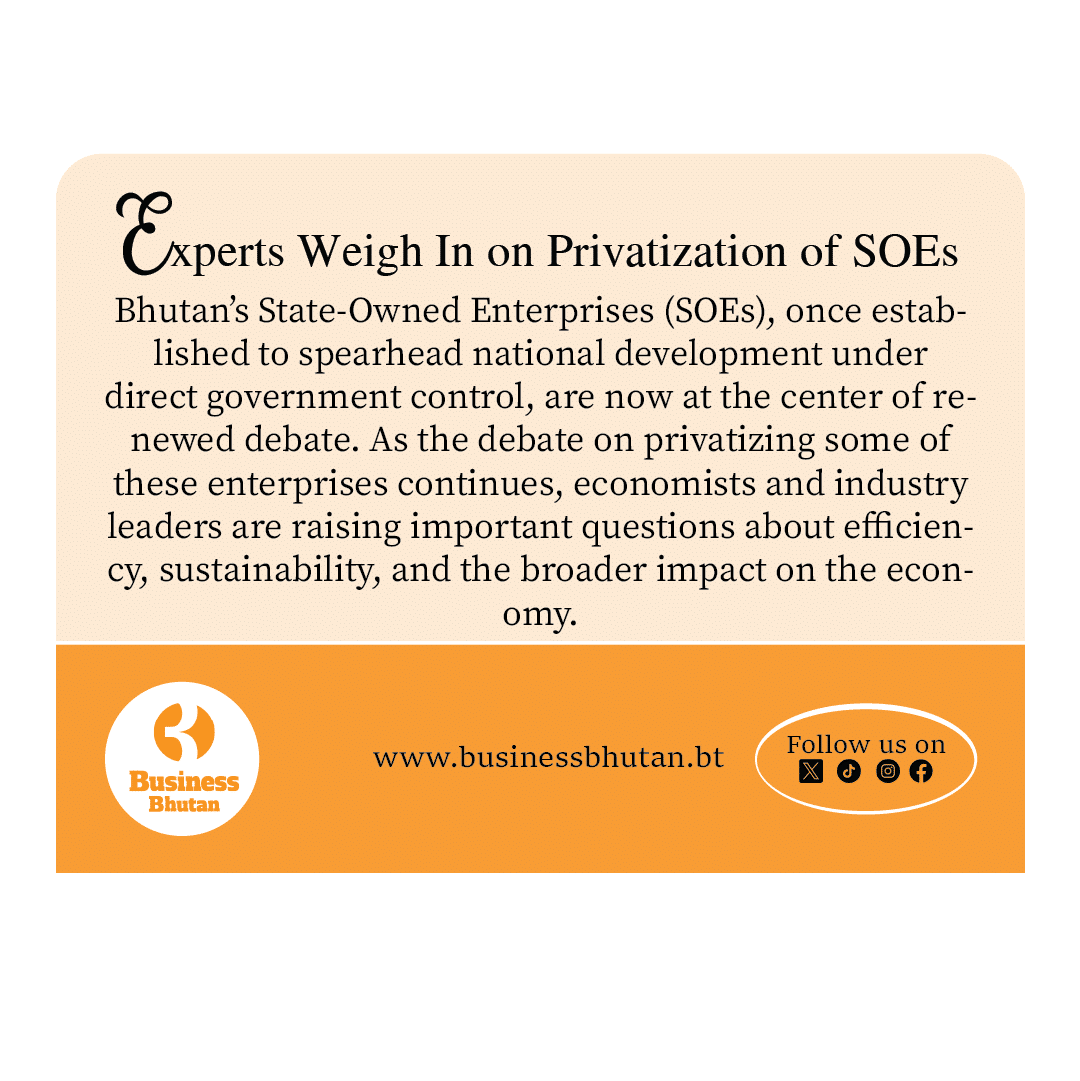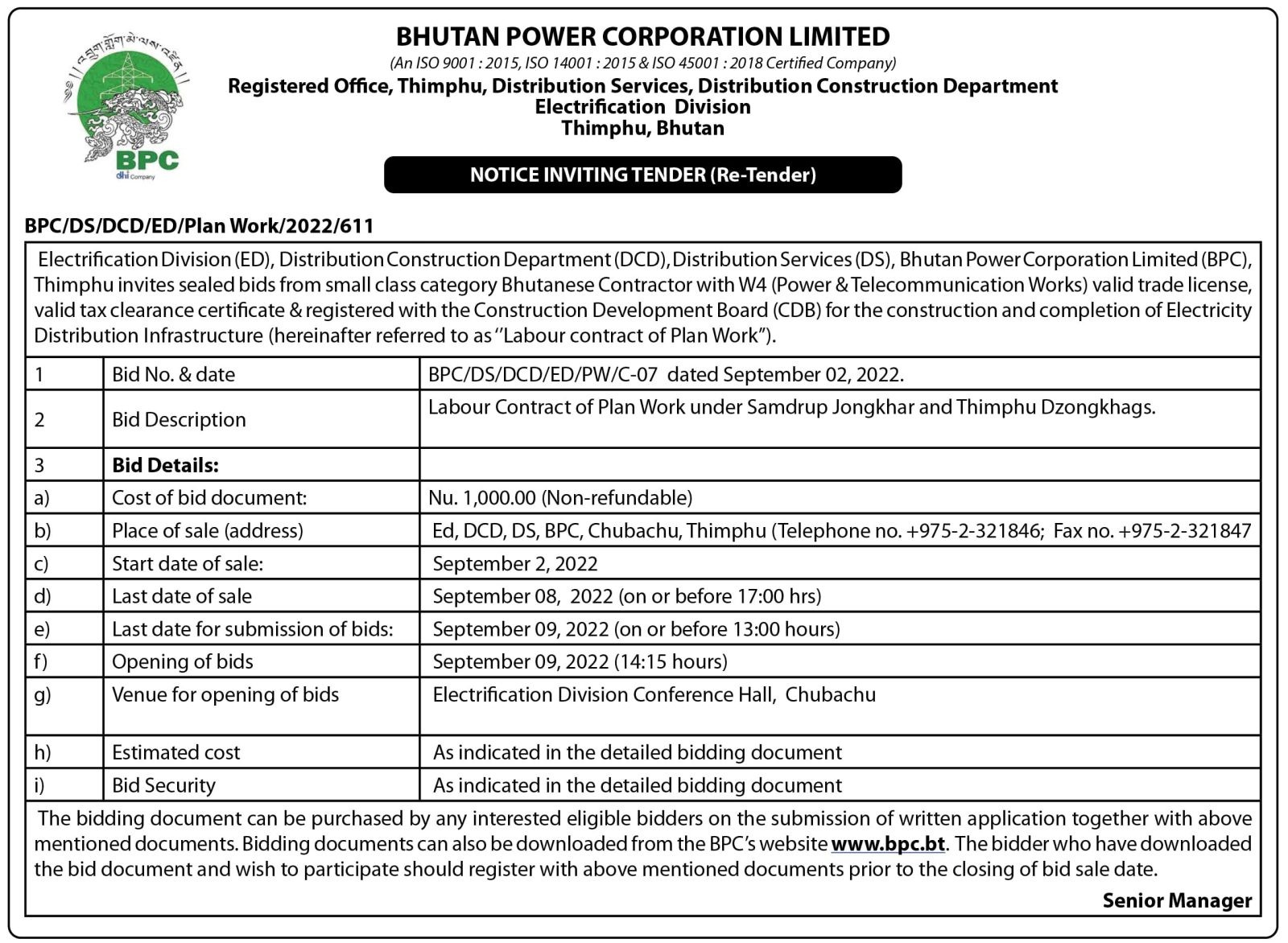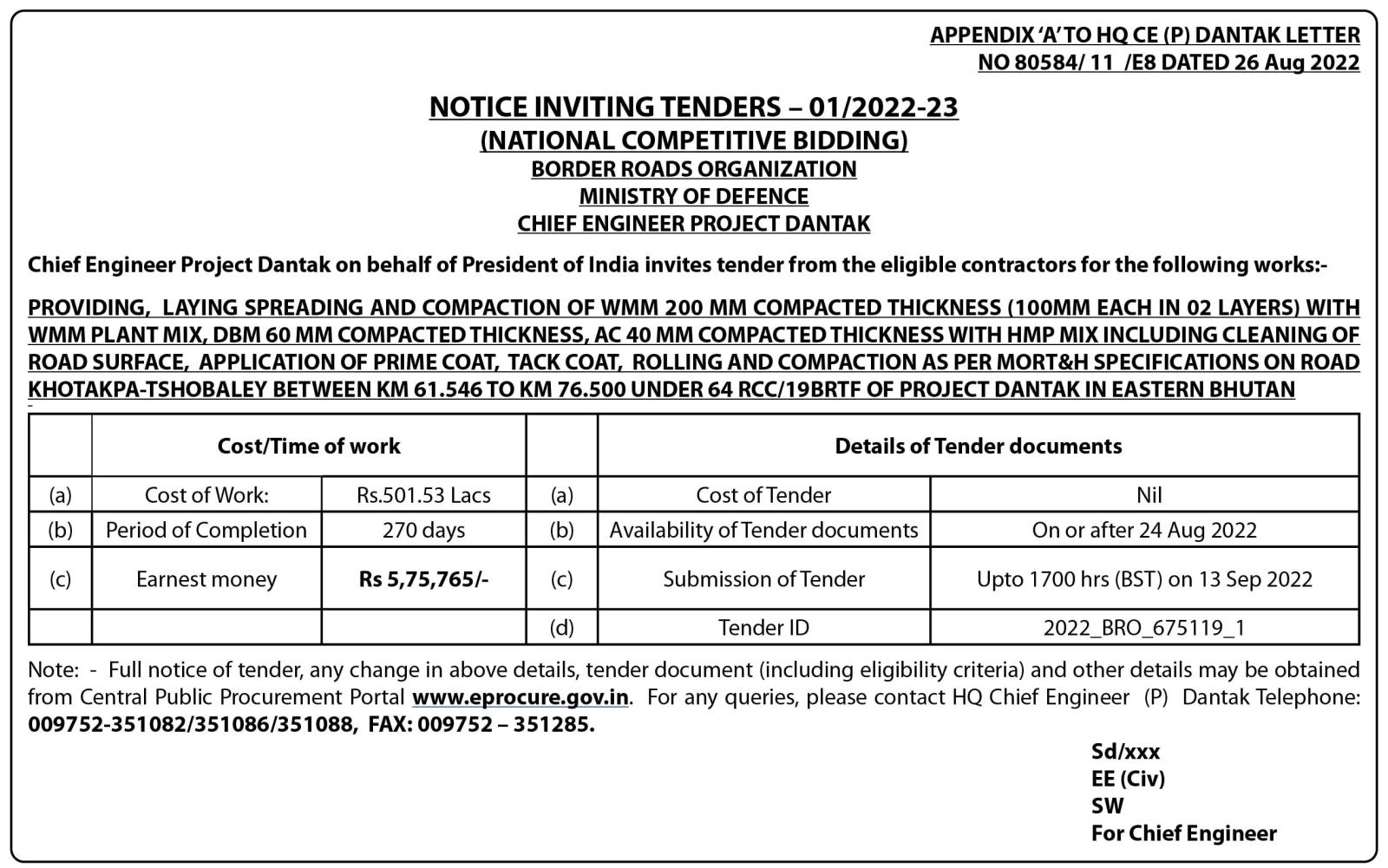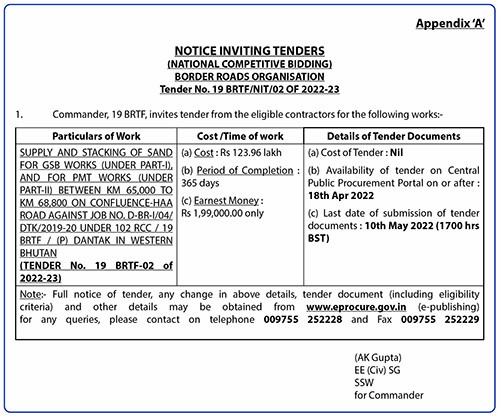Objective to increase the GDP contribution from the agriculture and livestock sector from Nu. 31 billion in 2023 to Nu. 50 billion by 2029
The Ministry of Agriculture and Livestock (MoAL)’s primary objective of the 13th FYP is to increase the GDP contribution from the agriculture and livestock sector from Nu. 31 billion in 2023 to Nu. 50 billion by 2029, at current prices. Anchored on the theme “Transforming the Agrifood Sector for Economic Growth and Sustainable Development,” the Ministry has adopted a two-pronged approach: Commercialization of Potential Commodities, focusing on scaling up large-scale commercialization to enhance economies of scale and Resilience Building for Smallholder Farmers to ensure sustainability by strengthening the resilience of smallholder farmers.
Meanwhile, the Ministry’s 13th FYP has a total indicative budget of Nu. 14,983.15 million, allocated across five key projects:
- Promotion of Large-Scale Commercial Farming: Nu. 2,024.12 million (13.51%)
- Building Resilience of Smallholder Farmers: Nu. 10,745.83 million (71.72%)
- Promotion of High-Value Products for Export Markets: Nu. 312.2 million (2.08%)
- Enhancing Ecosystem Services: Nu. 101 million (0.67%)
- Improving the Business Ecosystem: Nu. 1,800 million (12.01%)
The above and more have been revealed by the Ministry as it launched its 13th FYP. In a press release (PR) the Ministry has said that it reaffirms their commitment to “transforming the agrifood sector into a dynamic engine of economic growth and enhanced food security.” “This plan, spanning from 2024 to 2029, outlines a strategic vision to elevate the sector’s contribution to the Gross Domestic Product (GDP), with the ambitious goal of reaching USD 5 billion by 2029. It also seeks to align our efforts with international commitments, including the Sustainable Development Goals (SDGs),” the PR says.
According to the Ministry, the 13th FYP is the result of extensive consultations with stakeholders across the country and addresses the current needs of the agrifood sector while positioning it as a key driver of economic growth and sustainability under the theme, “Transforming the Agrifood Sector for Economic Growth and Sustainable Development.”
Commercialization of Potential Commodities emphasizes the commercialization of commodities that are currently imported to meet domestic demand, including for institutions such as Gyalsung Academies, schools, and hospitals. Additionally, the plan provides targeted support for the promotion of high-value crops and specialty livestock products, aiming to boost export earnings.
The Support for Smallholder Farmers is in recognition of the crucial role smallholder farmers play in ensuring household-level food security, the plan includes several measures to build their resilience. Under this, the key initiatives are:
- Protection against wildlife conflicts.
- Improved irrigation systems.
- Provision of essential production inputs.
- Pest and disease surveillance.
- Enhanced market linkages.
The Ministry has also outlined projects along with activities, which are:
Promotion of Large-Scale Commercial Farming:
- Establishment of seven large-scale agriculture farms across the country, focusing on prioritized cereals and vegetables.
- Development of large-scale broiler farms, each housing 10,000 birds, with an annual production of 270 metric tons (MT) of chicken.
- Creation of large-scale pig fattening farms, each with an annual production capacity of 53 MT of pork.
- Setting up Chirup commercial carp farms, each producing 15 MT annually.
- Establishment of two agrifood economic hubs in Paro and Sarpang.
Building Resilience of Smallholder Farmers:
- Implementation of the Million Fruit Tree Project.
- Enhancement of self-sufficiency in rice (30%) and vegetables (62%).
- Promotion of other cereals and nutri-cereal production.
- Measures to mitigate human-wildlife conflict.
- Targeting 85% of total milk consumption to be met through domestic production.
- Input support for egg, chicken, pork, and fish production.
- Strengthening animal and plant health management.
Another aspect is the promotion of High-Value Products for Export Markets, with the plan focusing on the production and export of high-value products through different ways such as:
- Production of high-value organic asparagus and organic broccoli.
- Establishment of commercial strawberry farms and mushroom enterprises.
- Enhancement of honey production and marketing, targeting a total production of 83 MT across various honey products.
- Expansion of trout production and development of premium quality products for high-end markets.
The Ministry would also enhance Ecosystem Services, with emphasis on the sustainable management of natural resources, including, sustainable management and utilization of native animal and plant genetic resources. And bioprospecting initiatives to explore and utilize biological resources
Another important component of the plan is improving the Business Ecosystem, with the plan
including measures to enhance the business environment within the agrifood sector through: implementation of regulatory reforms and policy enhancements and strengthening governance infrastructure and facilitating access to finance and incentive mechanisms.





